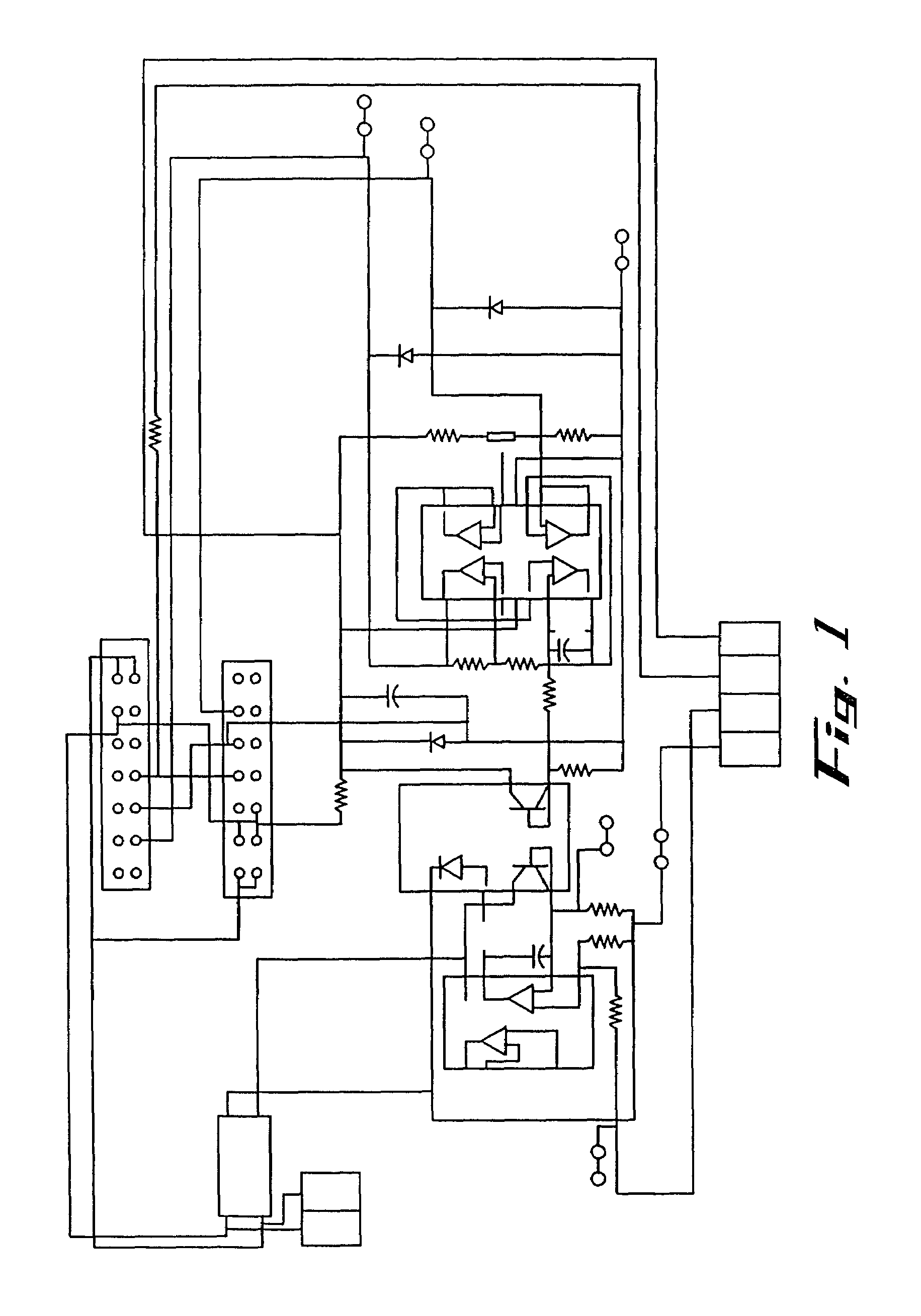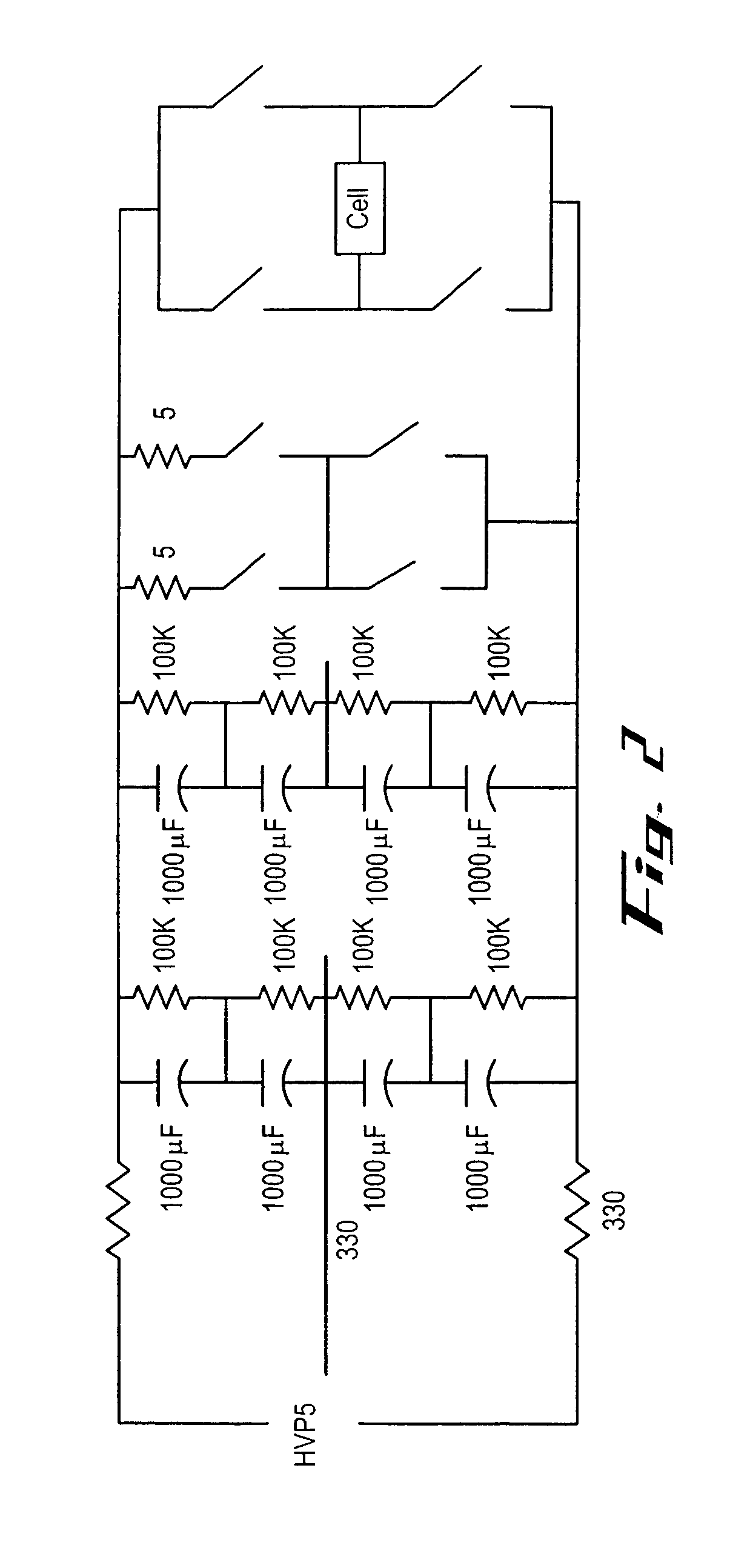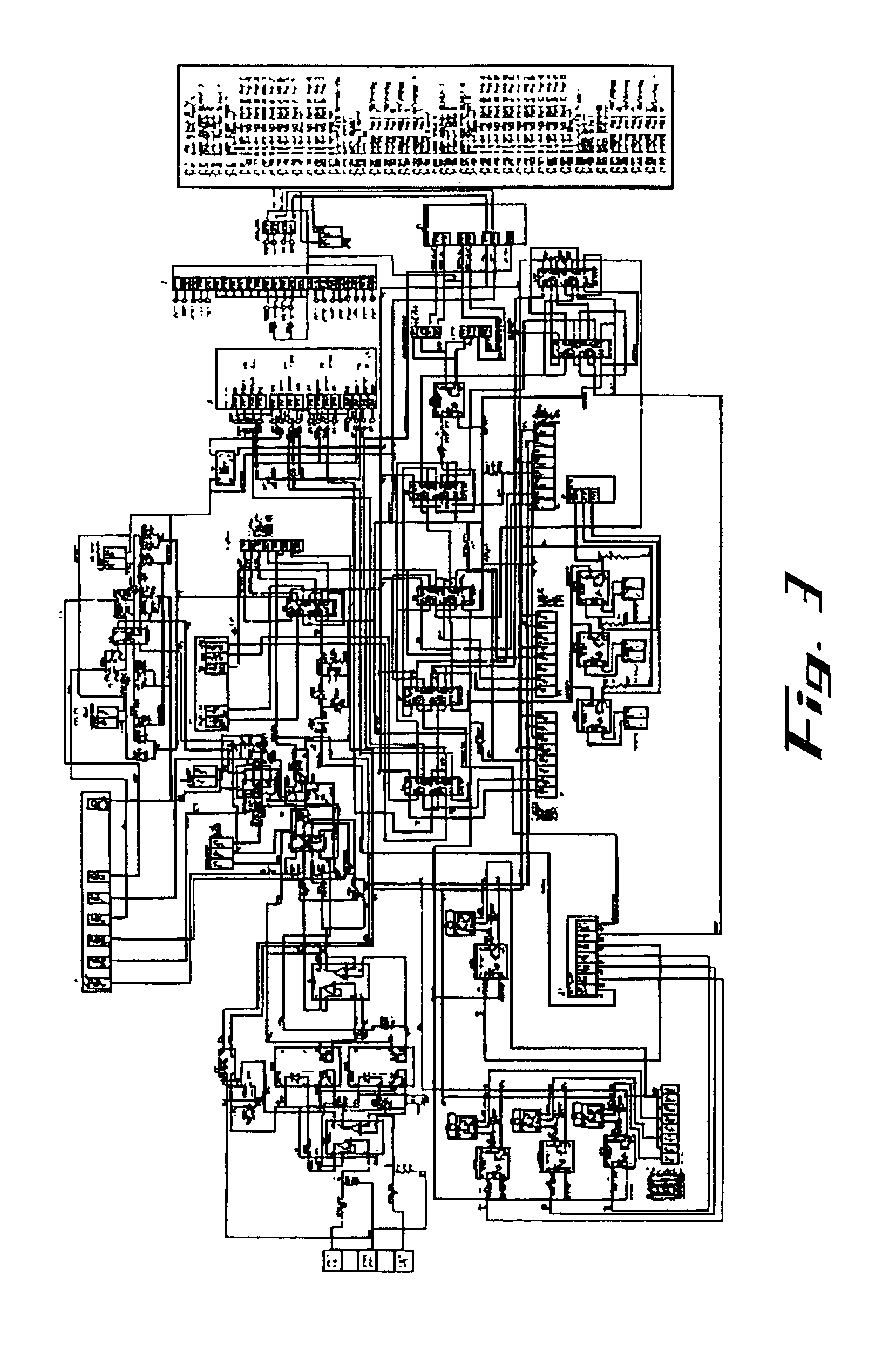Apparatus and method for flow electroporation of biological samples
a flow electroporation and apparatus technology, applied in biochemistry apparatus and processes, biomass after-treatment, specific use bioreactors/fermenters, etc., can solve the problems of damage to cells and cell components, insufficient surface area of the electrode, and large heat buildup in the prior art flow cells, etc., to achieve simple and efficient effects
- Summary
- Abstract
- Description
- Claims
- Application Information
AI Technical Summary
Benefits of technology
Problems solved by technology
Method used
Image
Examples
example i
Electroporation of Red Blood Cells with IHP
[0226]It has been determined that one of the most important parameters to control is production of heat. Red blood cells are extremely sensitive to heat and this was found to be an important parameter in the inefficiency of prior art electroporation methods. The following example was performed using the apparatus described herein.
[0227]60 mLs of blood is collected from a human donor into a collection set containing 15 to 20 m of CPDA-1 (21 CFR 640.4) buffer 26.3 g trisodium citrate 3.27 g citric acid: 31.9 g dextrose: 2.22 g monobasic sod phosphate: 0.275 g adenine:, H2O to 1000 mL. The volume per 100 mL of blood is 14 mL)) It is to be understood that larger volumes of blood can be treated with the present invention. The blood is transferred to two 50 mL centrifuge tubes and then is centrifuged for 10 minutes at 2000 g. The plasma is collected from above the cell pellets and transferred into a separate sterile 50 mL tubes and stored. The bu...
example 2
To Electroporate Non-Stimulated Lymphocyte
[0231]Primary lymphocytes were suspended in B&K buffer (125 mM KCl, 15 mM NaCl, 1.2 mM MgCl2, 3 mM glucose, 25 mM Hepes, pH 7.4) cell concentration was set from 1×107 cells / mL to 6×108 cells / mL together with DNA plasmid from 50 μg / mL to 1 mg / mL. Electroporation, 2.3 kV / cm, 400 μs, 4 pulses for small volume experiments (15 μl) or 2.2 kV / cm, 1.6 ms, 1 pulse for large volume experiments (0.5 mL–2 mL) was performed at room temperature. Following electroporation, cells were incubated in B&K buffer for 20 min at 37° C. for small volume experiments, or diluted by 10× volume of culture medium (RPMI-1640+10% fetal bovine serum+1% Pen-strep+2 mM L-glutamine) for large volume experiments. Cells were cultured in culture medium for various periods (up to 72 hours) and the transfection efficiency was analyzed.
[0232]Primary quiescence lymphocytes have been shown refractory to retrovirus based gene transfer. HIV based vector could transduce primary lymphocy...
example 3
Electroporation of Stimulated Lymphocytes
[0233]Primary lymphocytes (5×106 cells / mL) were stimulated with PHA-P (up to 10 μg / mL) and 10 U / mL hrIL-2 for 48 hours in culture medium (RPMI-1640+10% Fetal bovine serum+1% Pen-strap+2 mM L-glutamine). Large cell aggregates were collected by incubating the cells in a 15 mL centrifuge tube for 10 min in the incubator and re-suspended in B&K buffer with 200 μg / mL of plasmid DNA. Following electroporation at 1.8 kV / cm, 400 μs, 4 pulses, cells were incubated for 20 min in B&K buffer at 37° C. for small volume experiments or diluted with 10× volume of culture medium containing 20 U / mL hr IL-2. Cells were cultured with culture medium containing 20 U / mL IL-2 for various periods (up to 20 days) and the transfection efficiency was analyzed.
[0234]This is the first demonstration of gene transfer of large amount of (greater than 1×108 cells) stimulated-lymphocytes by a non-viral method.
PUM
| Property | Measurement | Unit |
|---|---|---|
| thermal resistance | aaaaa | aaaaa |
| thermal resistance | aaaaa | aaaaa |
| volume | aaaaa | aaaaa |
Abstract
Description
Claims
Application Information
 Login to View More
Login to View More - R&D
- Intellectual Property
- Life Sciences
- Materials
- Tech Scout
- Unparalleled Data Quality
- Higher Quality Content
- 60% Fewer Hallucinations
Browse by: Latest US Patents, China's latest patents, Technical Efficacy Thesaurus, Application Domain, Technology Topic, Popular Technical Reports.
© 2025 PatSnap. All rights reserved.Legal|Privacy policy|Modern Slavery Act Transparency Statement|Sitemap|About US| Contact US: help@patsnap.com



